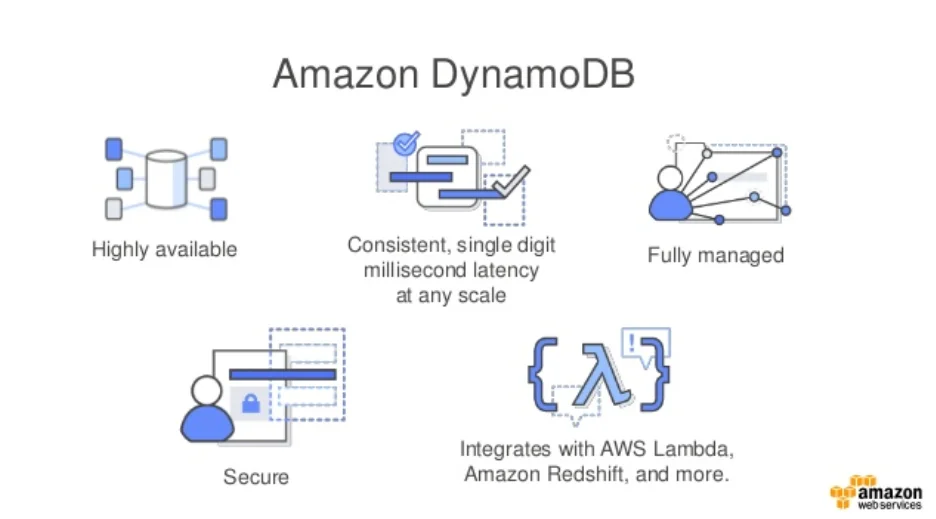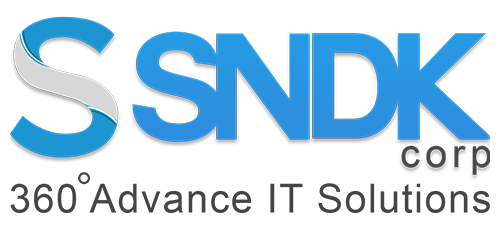Blog
AWS DynamoDB – Introduction, Use Cases & Case Study
AWS DynamoDB is a fast, flexible, NoSQL database service for all applications that need consistent latency, in milliseconds, at any scale. It is a fully-managed database service that takes care of operational reliability, hardware or software provisioning, data partition, data recovery, security, built-in fault tolerance and is suitable for mobile, web, gaming, ad tech, IoT etc. Also, you don’t have to worry about patching and updating databases to the latest version.
DynamoDB handles more than one trillion requests per day, and more than 100,000 AWS customers use DynamoDB. To get started with your organization’s cloud migration and cloud computing journey, contact SNDK Corp, your most trusted AWS consulting partner with rich experience in serving customers in their journey to the cloud.

When to use DynamoDB?
When you have unstructured data and need a scalable database that is fast and reliable, DynamoDB is the best choice. It is the auto scale database for modern apps that needs high performance, higher throughput, lower latency, reduced cost of ownership, to make your life easier. SNDK Corp, a renowned cloud service provider offers cloud monitoring and cloud migration services as well as tools under the cloud computing services that help customers in driving and improving their productivity, output and performance – whether it’s a new cloud application or an existing application needing to be migrated.
Scaling high-velocity use cases with DynamoDB
Many of the world’s fastest-growing businesses such as Lyft, Airbnb, Redfin as well as enterprises such as Samsung, Toyota, and Capital One depend on the scale and performance of DynamoDB to support their mission-critical workloads.
No matter which sector your enterprise belongs with, you can always scale your database to cloud using DynamoDB. Let’s look at some of the common use cases across different sectors where DynamoDB proves to be an effective solution. For more details on scaling your enterprise database to cloud, read about SNDK Corp cloud computing services.
| Sector | Common Use cases |
|
Ad Tech |
User profile stores in RTB and ad targeting
User events, clickstreams, and impressions data store Metadata stores for assets Popular-item caches |
| Retail | Shopping carts
Workflow engines Inventory tracking and fulfilment Customer profiles and accounts |
| Banking and Finance | User transactions
Event-driven transaction processing Fraud detection Mainframe offloading and change data capture |
| Media and entertainment | Media metadata stores
User data stores Digital rights management data stores |
| Gaming | Game states
Player data stores Player session history data stores Leaderboard |
| Software and internet | User content metadata stores
Relationship graph data stores Metadata caches Ride-tracking data stores User, vehicle, and driver data stores User vocabulary data stores |
Serverless IoT
Out of the box, the AWS IoT console gives you your own searchable device registry with access to the device state and information about device shadows. You can enhance and customize the service using Lambda and DynamoDB to build a serverless backend with a customizable device database that can be used to store useful information about the devices as well as helping to track what devices are activated with an activation code if required. For queries related to how you can leverage DynamoDB for your organization, contact SNDK Corp.

Case study: Unlocking opportunities with AWS DynamoDB
As companies in banking and finance build more cloud-native applications, they usefully managed services to increase agility, reduce time to market, and minimize operational overhead. Vanguard is a financial services company that started a cloud construction team to set up a lab architecture, allowing the team to experiment and innovate with any kind of open-source software within an enterprise-grade security architecture setup. By having a multitude of servers and applications, users can access any open-source application and marketplace and work on managing and automating user transactions, event-driven transaction processing, fraud detection, using a sandbox or live environment.
Many companies in the retail space use common DynamoDB design patterns. Being free from scaling concerns and the operational burden is a key competitive advantage and an enabler for high-velocity, extreme-scaled events such as Amazon Prime Day, whose magnitudes are difficult to forecast. Scaling up and down allows these customers to pay only for the capacity they need and keeps precious technical resources focused on innovation rather than operations.

One key commonality among software companies and many other DynamoDB customers is the ability to accommodate extreme concurrency, request rates, and spikes in traffic.
Netflix uses DynamoDB to run A/B testing that builds personalized streaming experiences for its 125+ million customers. To make your enterprise cloud journey a success, contact SNDK Corp, your most trusted AWS consulting partner.
Duolingo, an online language learning site, uses DynamoDB to store 31 billion items on their online learning site. With courses provided in 80 languages, 24000 read units/second and 3300 write units/second. This is a read-heavy application, and DynamoDB is the perfect choice for a storage database.
Also Read: Amazon Connect – The Future of Call Centers: Features & Use Cases
Summing Up
By leveraging the power of the AWS DynamoDB, you can take advantage of the seamless integration between your enterprise applications, by managing your database using the cloud. Storage database powered by Amazon DynamoDB helps to manage and scale your growing user base and accompanied data, thus unlocking numerous opportunities to grow your business!
